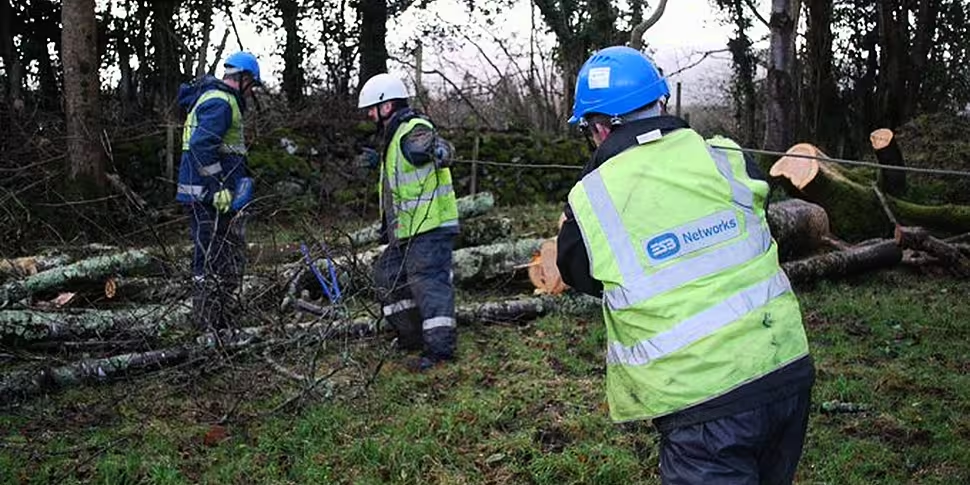ESB crews are working to restore power to 30,000 homes and businesses by the end of today.
Households across the country were left without power as high winds from Storm Barra took out powerlines and infrastructure overnight.
The winds have eased across most of the country; however, a Status orange warning will remain in place in Donegal until pm this afternoon.
Status Yellow warnings remain in place in Cavan, Monaghan, Dublin, Kildare, Laois, Longford, Louth, Meath, Offaly, Westmeath, Wicklow and Connacht.
Meanwhile, schools remain closed in 12 counties that were under Red of Orange warnings until early this morning.
On The Pat Kenny Show this morning, ESB Networks spokesperson Siobhan Wynne said crews are aiming to restore power to 59,000 households by the end of the day.
“The worst affected areas are the western and north-western seaboard,” she said.
“That kind of track from Kerry up to Limerick, Clare and right up to Sligo, we have a large amount of faults in those areas,” she said.
“Thankfully, conditions have improved out there and that has allowed us to mobilise our crews again first-thing this morning.
“So, all of our staff are now deployed looking to make those network repairs. We would hope to have the majority of those customers back by the end of the day but there is obviously a chance that some customers will be without power now tonight as well.”
She said all areas of the country were affected last night – with the majority of the problems now on western seaboard and north-western seaboard.
She said anywhere power is not restored tonight should have it back by tomorrow night at the latest.
“Obviously we will do everything to get as many people back now this evening because we appreciate it obviously is disruption to people but there can be quite a lot of work involved in restoring power in remote locations – particularly where it involves replacing structures and poles,” she said.
Meanwhile, the Chair of the National Emergency Co-ordination Group, Keith Leonard warned that there are still hazardous conditions in many areas as the winds recede.
“One of the most dangerous times in storms is actually that piece in the aftermath where people go out, they have a look, they see the roof is damaged or they see that they want to get rid of some trees,” he said.
“It is very important today that people be very aware that things are still very hazardous out there and you need to really take a breath and just make an assessment – particularly if you are working outdoors or working alone.”
You can listen back here:









